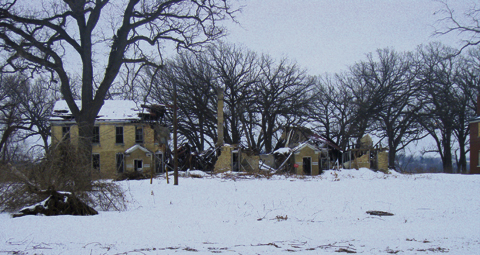September 20 | ![]() 0 COMMENTS
0 COMMENTS ![]() print
print

Transience can help us in the search for all that is permanent
Fr Ronald Rolhesier
Home is where we start from,” TS Eliot wrote that and it describes an experience that can be felt both as a freedom and as a heartache. I cite my own case: I grew up in a second-generation immigrant community on the Canadian prairies. My grandparents’ generation had been the first settlers in that region and everything they built, from their houses to their schools, were understandably built with what they could afford and situated along roads and railways they could access. They did the best with what they had and didn’t have the luxury of building with long-term permanence in mind.
Consequently many things of buildings that surrounded me when I was a child have since disappeared: The elementary school that I attended closed while I was still a student there. Both the building and school grounds have long ago disappeared. Wheat fields grow there now and you would never know that a school once existed on that location. The same holds true for the high school I attended. It too has disappeared, buildings and grounds replaced by grain fields. Indeed, the entire town that gave it its address has disappeared.
After high school, I attended two separate seminaries and each of these too suffered the same fate; both stood empty for number of years and then were gutted by fire. The theological college that I taught at for the first 15 years of my priesthood was demolished to make room for a new freeway and now operates out of new buildings on a different site. The farm that I grew up on still operates, though the house I grew up in is now abandoned and the fields rented out. Nobody in my family lives there anymore. It is symbolic perhaps that the only building that is still in use from my early years is the church where I worshipped as a child. Every other building of my youth, adolescence, and early adulthood has disappeared. I am an orphan in terms of the buildings that nurtured me in my youth.
But, in this, I am hardly unique. All of us today, in different forms, are orphaned in this way. Already in 1970, Alvin Toffler, in his famous book, Future Shock, pointed out how transience and impermanence are beginning more and more to shape our psyches, as things, people, places, knowledge, and organisations pass through our lives at an ever-increasing rate. And he wrote this long before the impact of information technology began to reshape our lives much more radically.
The transience and impermanence that Toffler describes in 1970 are dwarfed and taken to their square root by information technology today. By today’s standards, things, people, places, knowledge, and organisations were passing through our lives at a snail’s pace 40 years ago, in 1970. Today, more than the buildings of our youth (above) are disappearing from our lives.
What is to be said about this? What does this transience say about our lives and our times? Is this good or bad?
I suspect that we are all still sorting this out. Transience and impermanence aren’t sins, though they aren’t necessarily virtues either. For me, it seems, they are a mixed bag, a mixed blessing. On the positive side, they have brought us a new freedom. For many centuries, people were too much imprisoned by the suffocating permanence of the things, places, and knowledge of their time. They had stability, but often had petrification as well. Everything held firm, but too firm, few new doors ever opened. The transience and impermanence in our lives sets us free in a way that allows us to let ourselves be nourished and blessed by our roots, even as we aren’t bound by them.
But there is a huge heartache in this as well. Constantly having the familiar disappear can also grieve the heart, and it should. It is healthy to want to go back to visit the old houses, schools, neighbourhoods, and textbooks that once nurtured us. And so the loss of the things and places of our youth can be painful.
But the pain of transience and impermanence in our lives also helps point us towards the things that do not change, namely, faith, hope, and love. These can never be bulldozed-under, replaced by grain fields, burnt-down by fire, expropriated and knocked down to make way for a new freeway, or rendered obsolete by newer software. In this world, scripture tells us, we have no lasting city, but we are already inextricably bound up with things that do last forever.
Centuries before Christ, the biblical writer, Qoheleth warned us that everything in this life is vanity: “Vanity of vanities, everything is vanity.” However he uses the word ‘vanity’ in a different sense than we do today. For him, it does not connote a psychological narcissism or an unhealthy preoccupation with our appearance and persona. Rather, for him, ‘vanity’ simply means vapour, a passing mist, transience, impermanence, something that disappears too quickly.
Experiencing that transience can give us a heartache; but it can also make us search more deeply inside all this impermanence for that which is permanent.
n Fr Ronald Rolheiser is a Catholic priest and
member of the Missionary Oblates of Mary
Immaculate. He is president of the Oblate School of Theology in San Antonio,











